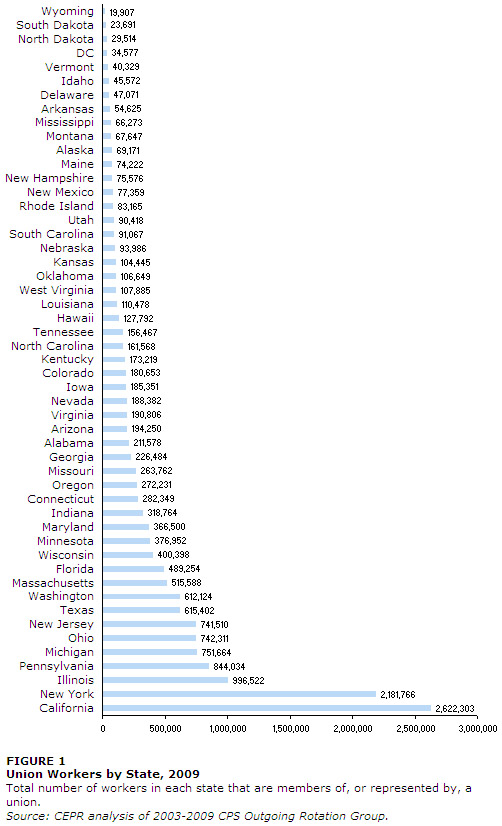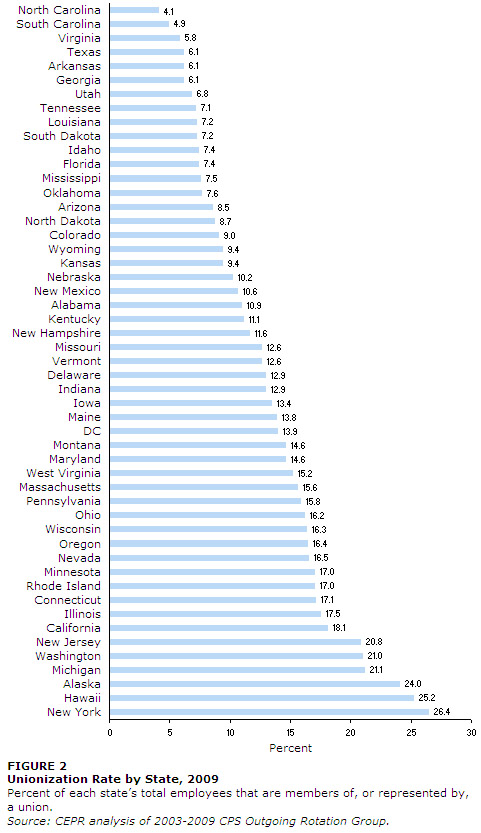February 2010, John Schmitt
This report reviews unionization rates, the size and composition of the unionized workforce, and the wage and benefit advantage for union workers in each of the fifty states and the District of Columbia, using the most recent data available and focusing on the period 2003-2009. Pooling data from the monthly Current Population Survey (CPS) over that period yields a sample size large enough to look at the experience of even the smallest states.
Unionization rates vary substantially across the states, from below 5 percent of the overall workforce in South Carolina and North Carolina, to over 25 percent in New York and Hawaii. The unionization rate in the state right in the middle with respect to unionization is 12.6 percent (the rate in Missouri and Vermont). The absolute number of union workers in each state also varied greatly in 2009, from just 20,000 in Wyoming to about 2.6 million in California.
Across all the states, however, unionization is strongly associated with increases in overall compensation, measured here by hourly wages and health and pension benefit coverage. In the typical state, unionization is associated with about a 15 percent increase in hourly wages (roughly $2.50 per hour), a 19-percentage-point increase in the likelihood of having employer-provided health insurance, and a 24-percentage-point increase in the likelihood of having employer-sponsored retirement plans.

